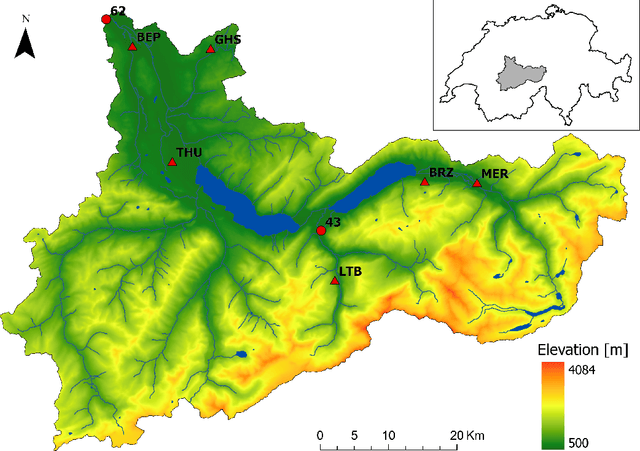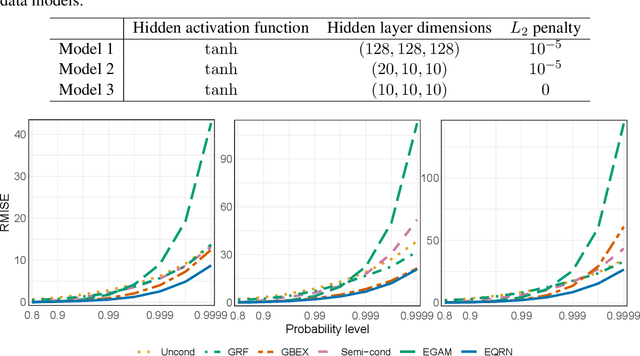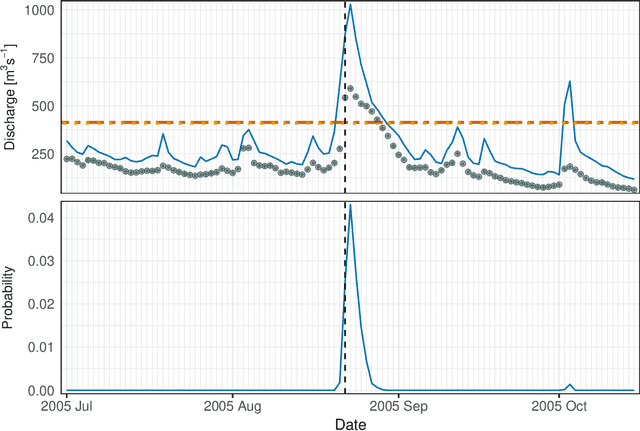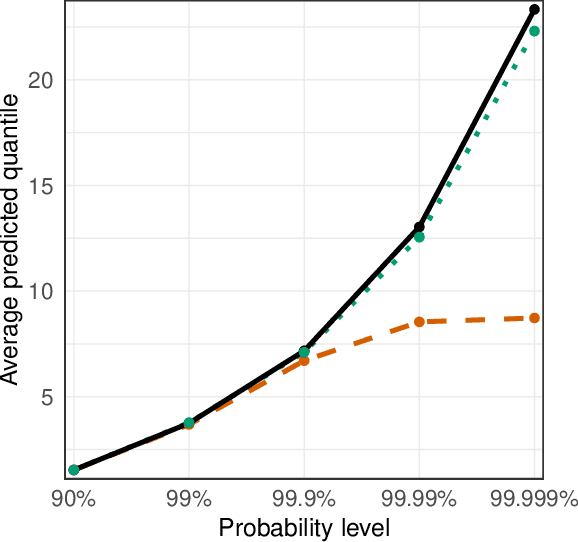Olivier C. Pasche
Extreme Conformal Prediction: Reliable Intervals for High-Impact Events
May 13, 2025Abstract:Conformal prediction is a popular method to construct prediction intervals for black-box machine learning models with marginal coverage guarantees. In applications with potentially high-impact events, such as flooding or financial crises, regulators often require very high confidence for such intervals. However, if the desired level of confidence is too large relative to the amount of data used for calibration, then classical conformal methods provide infinitely wide, thus, uninformative prediction intervals. In this paper, we propose a new method to overcome this limitation. We bridge extreme value statistics and conformal prediction to provide reliable and informative prediction intervals with high-confidence coverage, which can be constructed using any black-box extreme quantile regression method. The advantages of this extreme conformal prediction method are illustrated in a simulation study and in an application to flood risk forecasting.
Validating Deep-Learning Weather Forecast Models on Recent High-Impact Extreme Events
Apr 26, 2024



Abstract:The forecast accuracy of deep-learning-based weather prediction models is improving rapidly, leading many to speak of a "second revolution in weather forecasting". With numerous methods being developed, and limited physical guarantees offered by deep-learning models, there is a critical need for comprehensive evaluation of these emerging techniques. While this need has been partly fulfilled by benchmark datasets, they provide little information on rare and impactful extreme events, or on compound impact metrics, for which model accuracy might degrade due to misrepresented dependencies between variables. To address these issues, we compare deep-learning weather prediction models (GraphCast, PanguWeather, FourCastNet) and ECMWF's high-resolution forecast (HRES) system in three case studies: the 2021 Pacific Northwest heatwave, the 2023 South Asian humid heatwave, and the North American winter storm in 2021. We find evidence that machine learning (ML) weather prediction models can locally achieve similar accuracy to HRES on record-shattering events such as the 2021 Pacific Northwest heatwave and even forecast the compound 2021 North American winter storm substantially better. However, extrapolating to extreme conditions may impact machine learning models more severely than HRES, as evidenced by the comparable or superior spatially- and temporally-aggregated forecast accuracy of HRES for the two heatwaves studied. The ML forecasts also lack variables required to assess the health risks of events such as the 2023 South Asian humid heatwave. Generally, case-study-driven, impact-centric evaluation can complement existing research, increase public trust, and aid in developing reliable ML weather prediction models.
Neural Networks for Extreme Quantile Regression with an Application to Forecasting of Flood Risk
Aug 16, 2022



Abstract:Risk assessment for extreme events requires accurate estimation of high quantiles that go beyond the range of historical observations. When the risk depends on the values of observed predictors, regression techniques are used to interpolate in the predictor space. We propose the EQRN model that combines tools from neural networks and extreme value theory into a method capable of extrapolation in the presence of complex predictor dependence. Neural networks can naturally incorporate additional structure in the data. We develop a recurrent version of EQRN that is able to capture complex sequential dependence in time series. We apply this method to forecasting of flood risk in the Swiss Aare catchment. It exploits information from multiple covariates in space and time to provide one-day-ahead predictions of return levels and exceedances probabilities. This output complements the static return level from a traditional extreme value analysis and the predictions are able to adapt to distributional shifts as experienced in a changing climate. Our model can help authorities to manage flooding more effectively and to minimize their disastrous impacts through early warning systems.
 Add to Chrome
Add to Chrome Add to Firefox
Add to Firefox Add to Edge
Add to Edge